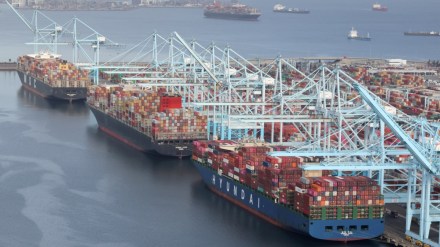The possibility of India’s trade flows being seriously impacted by the disruption to shipping on the Red Sea is definitely not good news. There are heightened concerns as the attacks on container shipments by Iran-backed Yemeni Houthi forces are continuing—despite the efforts of a US-led multinational patrol force—on the route to and from the Suez Canal which is the quickest way for goods to transit between Asia and Europe. Even on Monday, US shot down an anti-ship cruise missile towards an American destroyer. The Suez Canal accounts for 30% of all container ship traffic and is a vital conduit for crude oil shipments. A ball-park estimate of the hit to the country’s exports provided by the think-tank Research and Information System for Developing Countries to Bloomberg is around $30 billion, which implies a drop of 6.7% based on total exports of $451 billion last fiscal. Due to the ongoing targeting of shipping vessels, India’s exporters face the prospects of a surge in container rates as they reroute their vessels around Africa via the Cape of Good Hope which inflate costs as journeys take two weeks longer.
For such reasons, Indian exporters expect freight rates to go up by as much as 25% and insurance premiums to rise if the disruptions continue for much longer. The freight costs of India’s basmati rice exports to countries around the Red Sea have jumped from $600 per 20-tonne container to $2,000 given the rising risks. Textile and apparel exporters have started witnessing an increase in transit time and a rise in freight costs. Sensing delays, exporters are even exploring cargo flights to bypass the tensions on the trade route. However, a positive development is that no exporter has so far reported a shortage of containers which was expected due to longer vessel journeys. Another is that exporters have not yet faced demands for re-negotiation of contracts or discounts or even cancellations. Overall, the threat to shipping in the Red Sea has pushed exporters to hold back around 25% of their outbound shipments, according to Ajay Sahai, director general of the Federation of Indian Export Organizations.
Amidst these concerns, the fact that the Red Sea disruption hasn’t impacted India’s energy supplies should be welcomed. Only a few vessels carrying crude and fuels to India have been diverted via the Horn of Africa to avoid the Red Sea. The possibility of supply disruption is relatively less as India sourced around a third of its oil requirements from Russia that was shipped through the Red Sea last December according to ship-tracking data from Kpler. The Houthis have not attacked such consignments. More consequential for India is that less than half of its supplies were sourced from West Asia through the Persian Gulf and the Strait of Hormuz through which a fifth of global oil supplies passes through daily.
This could become a problem only if Iran becomes directly involved as risks rapidly escalate of the current conflict spilling over from Israel to Lebanon and Syria and retaliates by blockading the Strait. All bets then are off as oil prices would zoom and adversely impact the energy import-dependent Indian economy. Fortunately, that dismal scenario has not come to pass. But for now, India confronts the prospect of its exports being impacted due to trade re-routing at a time its overall shipments face global headwinds. This does not augur well for its growth story.
